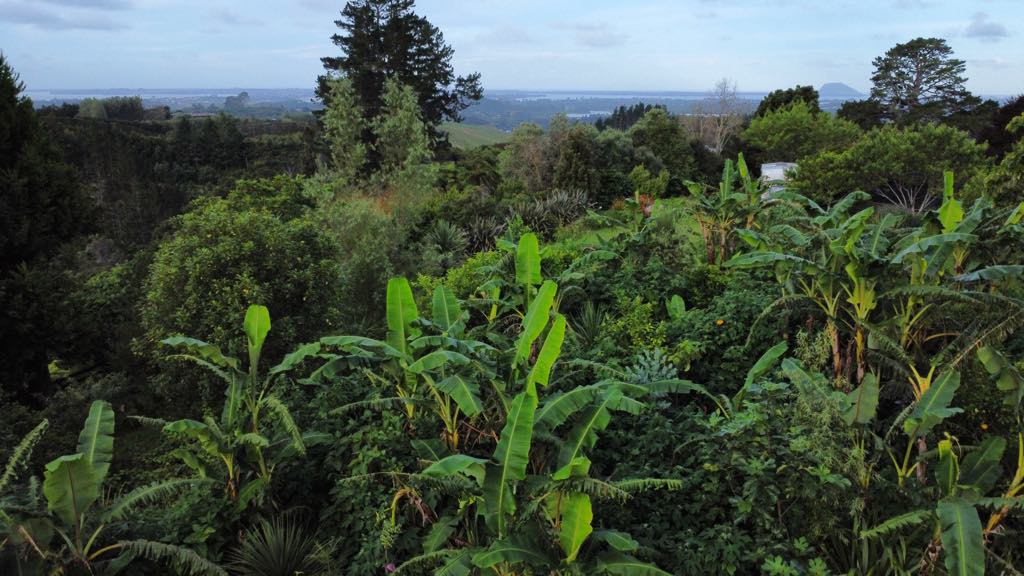Syntropic Agroforestry: Building Resilient Communities and Ecosystems Through Food Forests
Syntropic agroforestry, also known as food forests, is much more than a low-maintenance way to grow food that mimics natural forest ecosystems. Rooted in a revolutionary approach developed in Brazil by Swiss farmer Ernst Götsch, this method is deeply informed by the land stewardship practices of Brazil’s Indigenous peoples, who have cultivated the land in harmony with nature for centuries. Götsch’s work in the Brazilian tropics showed that by mimicking natural forest succession, humans could regenerate degraded lands, boost biodiversity, and increase food production. His groundbreaking techniques have turned barren landscapes into thriving forests, demonstrating that food production can go hand in hand with environmental restoration.
Recently, Byron Austin from Byron Grows based in Whakatane sat down with Healthy Families Rotorua to share his insights on how food forests contribute to preventative healthcare and community well-being.
“Most of the time, people are interested in growing a food forest because it sounds cool, or they saw some online post. But talking about this in terms of preventative healthcare is key.”
Byron emphasized the mutual healing that takes place when we engage in this sustainable practice. “We’re both healing the ecosystems and ourselves. As we develop a stronger connection with our environment, we start to appreciate where we live. Engaging with the seasons, soil, and wildlife transforms our lives. We become healthier, spend more time outdoors, and strengthen community ties.”
“This isn’t a sprint; it’s a marathon. These systems will produce food for hundreds of years. We’ll be planting trees that will bear fruit for three to four hundred years. This is just the start of something incredible.”
For those interested in experiencing this firsthand, we’re excited to announce that the upcoming Regional Kai Resilience Hui will include a tour of a food forest in Ōmanawa. Spaces are limited to 30 participants, and the event includes lunch at the stunning Ōmanawa Falls. Click here to register: Humanitix
In addition to local tours and events, community groups are playing a vital role in spreading the knowledge of food forests. Selena Hardman and Alana Smith co-founded the Food Forests Tauranga providing a platform for locals to share plants, tips, and experiences.
Experts like Jim / Nearsy from Mount Maunganui and Kriso Edge from Te Puke are also offering workshops, helping individuals and communities learn how to establish and maintain food forests of their own.
To learn about one of the most mature food forests in Aotearoa, check out PermaDynamics.
Across Aotearoa, communities are embracing food forests as a way to regenerate public land and offer the public a chance to explore this innovative approach to food production. It’s not just about growing food—it’s about growing connections, resilience, and a healthier future.

